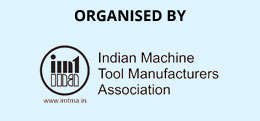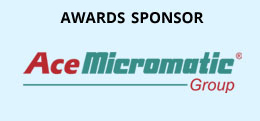Economic justification of Automation
Economic justification of Automation
By: Gautam Doshi
As a production engineer some years ago, I used to find it always a difficult proposition to economically justify investment for automation. First of all I had to convince myself, with numbers, that the company would make money if investment was done in automation equipment. I present below some views, which may not strictly pass an examination by a finance person, but can be understood easily by production engineers. Certainly financial experts can also use it especially those who can look beyond just accounts and have a wider business perspective.
Typically the cost to company (CTC) of skilled workmen in the organised sector is as per table below.
| Cost heads | Rs. per month |
Direct Cost |
|
|
5,000 |
Indirect Cost |
|
|
1,500 |
|
500 |
|
1,150 |
|
250 |
| Total | 8,860 |
One finds indirect costs are as much as direct costs especially in the organised sector. In most cases this indicative figure is exceeded. However for this article and the calculations therein, Rs. 9,000 will be used as CTC for a skilled workman.
If the company works all three shifts, annual cost of manning a machine (on a three shift basis) would be Rs. 3,24,000 (9,000 X 12 X 3). Suppose we are able to purchase equipment, where we do not need to man this machine, we could save the direct cost and maybe 50% of the indirect cost. Some indirect cost would anyway be incurred, for example personnel dept. or management costs. Thus the cost savings for unmanned machine in three shifts works out to Rs. 2, 43,000. This is revenue that would be incurred every year till the workmen are employed to man the machine. The interest and depreciation of a capital equipment is also a revenue cost. For example if one depreciates at the rate of 20% per year (ROI in 5 years) and pays a 10% interest, the revenue cost every year would be 30% of the capital invested. Therefore for every Rs. 100 invested in equipment the company incurs Rs. 30 as cost towards interest and depreciation. Now if one were to invest in an automation equipment costing Rs. 8, 01,000, the interest and depreciation on this would be Rs. 2, 43,000. We are revenue neutral by investing this amount since we save manning cost and capital expenditure of Rs. 8,01,000 for automation is justifiable. If one were to depreciate at 10%, i.e. the life of equipment is taken as ten years; one could even justify Rs. 16, 00,000. If one factors in interest on reducing balance, a higher amount could be further justified; however one need not get into such fine details at this stage. We also know that the annual wage cost of Rs. 2, 43,000 is not going to be constant over five years. It is actually going to increase over the years as wages and other costs rise; therefore even higher investments in automation can be justified.
Sometimes it is not possible to run a machine in unmanned situation; reasons could be many. Let us now look from the aspect of optimum utilisation of the equipment. To do this we must first look at how most companies utilise their machines. A typical machine utilisation chart looks as below and is based on an available time of 365 days X 24 hours.
The chart shows that during lunch/ tea breaks and when the workman uses personnel time the machine does not produce anything. However during this time cost continues to be incurred. This cost is the financial cost of interest and depreciation as well as wages and salary. Potentially if the machine were to operate during this period, there is a cost saving of 9% (lunch/ tea breaks 6% + worker inefficiency 3%) To convert this figure into monetary terms we need to calculate the machine hour cost rate. The table below shows a typical calculation of machine hour cost rate as well as the proportion of labour cost.
| Cost heads | M/c invest Rs. 10 lacs | % of Total Cost | M/c invest Rs. 50 lacs | % of Total Cost |
| Financial cost (depreciation, interest, rates & taxes) | 400K | 42 | 2000K | 64 |
| Consumables (cutting tools, power, lubricants, etc) | 222K | 23 | 810K | 26 |
| Labour cost | 324K | 35 | 324K | 10 |
| M/c hour cost rate | Rs. 158 | Rs. 522 |
On a machine in which one has invested Rs. 10, 00, 000, one finds the machine hour cost rate works out to Rs. 158. The labour cost as a percentage of the machine hour cost rate is 35%, on the basis of an annual CTC of Rs. 3, 24,000. In case the machine cost was Rs. 50, 00, 000, the percentage reduces to 10% of a machine hour cost rate of Rs. 522. This explains why the organised sector will invest only in costlier machines and vend out whatever can be done on cheaper machines to the unorganised sector, where labour costs are lower.
While calculating the machine hour cost rate it is assumed that the machine operates on a three shift basis. To calculate the cost incurred (fixed cost) when the machine does not produce, we remove the cost of consumables from the machine hour cost rate. This works out to 77% and 74% for the 10 lac and 50 lac machines respectively. One can take it as 75% for calculation. Thus the fixed cost incurred annually by a company for not producing during lunch/ tea breaks and when the operator is absent for personal reasons works out to Rs. 93,425 (158 X 75% X 365 X 24 X 9%). As this is revenue cost, when capitalised it would work out to Rs. 3,11,418 (93,425÷30%). Thus an investment of Rs. 3,00,000 in appropriate automation on a Rs. 10 lac machine, to the extent of allowing the machine to operate unmanned during breaks could be justified without too much difficulty. On the Rs. 50 lac machine this works out to Rs. 10,28,862.
In practice the benefits are much more because we have not accounted for the opportunity loss of 9% in terms of loss of profits, faster delivery, better ability to match demand and supply due to market variations, etc.
In conclusion, investment in appropriate automation may be justified on two counts; firstly in terms of savings in labour cost and secondly on account of using the equipment during breaks. There is however a third and very large area, which is not considered. If one refers to the pie chart on machine utilisation this accounts for 25% of available time and consists of weekly off, paid holidays and public holidays. During these days all financial costs are incurred, but without any returns. To mitigate this loss to a certain account, many companies carry out preventive maintenance during this period. Smaller CNC shops in unorganised sectors use extra workmen or incur overtime and try to utilise the machine during these days. Of course further automation could be thought of to use machines during these periods totally unmanned. However such solutions are very complex and often there are issues of reliability. Totally unmanned operation needs a very high degree of planning and very high consistency of inputs in terms of material and infrastructure (power failures are not acceptable). Probably such high levels are difficult to sustain in the Indian context and not appropriate even economically.



